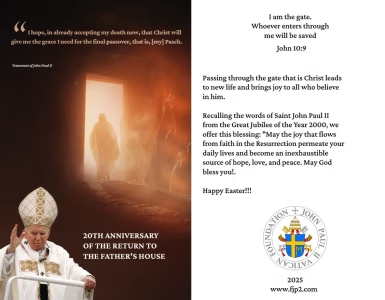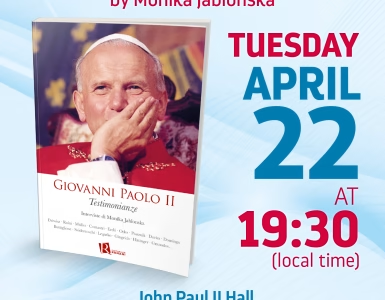The sisters served to the table. They ate their own, and then served another dish – recalls Archbishop Mokrzycki. – Others also helped. Like it is at home. Mom runs between the kitchen and the Christmas Eve table. The rest helps. So, it was with us. The sisters were running. There were no twelve dishes. The Archbishop is slowly listing dishes that were appearing on the table. And, so at first there were the appetizers: fish in jelly and vegetable salad. In Italy, it is called Russian lettuce, I do not know why – says the former secretary. – Then there was borscht with small dumplings, fried carp with cabbage salad, there were also cabbage rolls stuffed with groats in mushroom sauce. And, noodles with poppy seeds. For this, the sisters made compote from dried pears. And, they baked various sweets. When I ask what John Paul II liked the most from this Christmas Eve menu, the Archbishop answers: He liked borscht with small dumplings and, of course, cakes. He liked the most all those shortbread cookies that the sisters baked. He always liked the cake too. The sisters watched with joy as he ate everything from the plate, until the last crumb. He just simply cleaned the plate with a spoon. Nothing was left on it. It is hardly surprising. Everything was supposedly delicious, homemade. And – most importantly – traditional, Polish. Poppy seed cake (Makowiec) came from Poland. Mr. and Mrs. Turowski brought a walnut cake, I remember – says the former secretary. – They brought the layers for the cake. And, here the cake’s filling was made. Danusia Ciesielska brought poppy seeds roll cakes or someone was bringing it when she could not come herself. There was even tea from Poland. The Holy Father always drank tea during Christmas Eve, fruit tea was the best. From Lublin. Forest fruits, raspberries, wild rose. We also drank water and finally coffee. It is such an Italian custom. Because in Poland at this time coffee is rather not drunk, even to sweets – laughs the Archbishop. Around eighteen o’clock (6p.m.) John Paul II was getting up from the table and was lighting a candle in the library window. He did it for the first time in 1981, eleven days after the introduction of martial law in Poland. It was supposed to be a sign of unity and solidarity with Poles, whose holidays were neither good nor peaceful at that time. Martial law ended, communism collapsed, and custom remained. It was a symbol of communion and solidarity with Poles, about whom the Holy Father always thought warmly, on Christmas Eve even more and even warmer – says Archbishop Mokrzycki. Cardinal Dziwisz once recalled that this candle was a symbol of wishes for peace in the world and peace in our homeland, peace in our families. This candle burned all night and those who went to the midnight mass knew that it was a candle of peace. This sign has grown so much into the landscape of the Papal vigil that Benedict XVI continued the custom. Like many other Christmas customs.
With the consent of Archbishop Mieczysław Mokrzycki – “Place for everyone”
Znak Publishing House, Kraków 2013.





